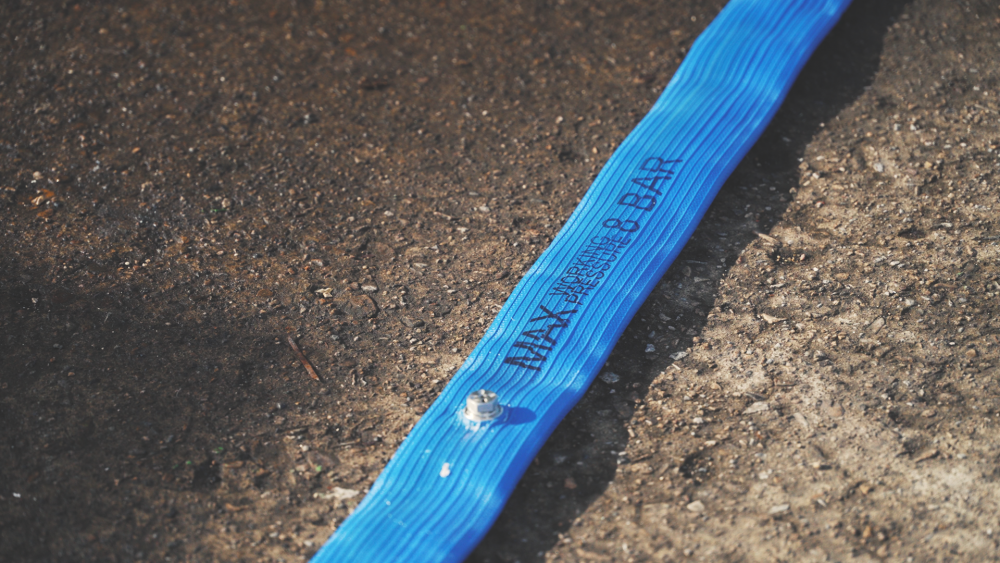What Is a Fire Hydrant Valve?
Fire hydrant valves are control points on a pressurised water network that allow firefighters (or on-site emergency teams) to connect hose lines and draw water to tackle a fire. They are used on public water mains, private site mains and wet risers, across industrial, commercial, and municipal environments.
Hydrant valves do three essential jobs:
- Isolate or regulate water flow at the connection point
- Provide a standardised outlet for fast hose hookup
- Withstand, rough handling, and harsh environments
Fire Hydrant Valve Types
Valves (Wet Riser / Internal Hydrants)
- Wall- or cabinet-mounted valves on wet riser systems in buildings
- Typically globe- or gate-type with a 2½” (63.5 mm) British Instantaneous (BS 336) or regional equivalent outlet
- Used with layflat hose for internal firefighting
Pillar (Above-Ground) Hydrants
- Free-standing, above-ground hydrants on site or street mains
- Available as wet-barrel (always charged with water; common in warm climates) or dry-barrel (valve below frost line; barrel drains after use; common in cold climates)
- May include twin or multiple outlets with local coupling standards (e.g., British Instantaneous, Storz, NST/NH etc.)
Underground (Flush) Hydrants
- Below-ground body with a surface box and cover; compact and vehicle-friendly
- Operated via a standpipe and key; common on industrial estates and public roads
- Ideal where above-ground equipment is undesirable
Pressure-Reducing / Pressure-Regulating Hydrant Valves
- Built-in regulation to deliver a safe, consistent outlet pressure across a range of inlet pressures
- Protects hose lines and crews in high-pressure networks or high-rise buildings
- Often used pillar hydrant systems
Ratings, Standards and Approvals
Pressure Classes (Working vs. Test)
- Common working pressure classes: BS10 Table D/E, PN16, ANSI or JIS 10K/16K
- Bodies and bonnets are pressure-tested above working pressure; check manufacturer data for seat, shell, and operating torque values
- Choose a class that suits the highest credible network pressure plus transients (water hammer)
Flow Performance
- Look for Kv/K-factor or certified flow curves at defined pressure drops
- Larger waterways, smooth profiles, and full-bore valves reduce friction losses and improve available flow at the nozzle
Key Product Standards (Examples)
- Globe valves / internal hydrants: BS 5041 PT 1
- Underground hydrants: EN 14339 :2005
- Pillar (above-ground) hydrants: EN 14384 (EU)
- Always verify local code references
Materials and Finishes
- Bodies: Ductile iron, bronze/gunmetal, or stainless steel for corrosive atmospheres
- Internals: Bronze/stainless trim; resilient seats (EPDM/NBR) chosen for water quality and temperature range
- Coatings: Natural finish or marine-grade paint;
Connections and Compatibility
Inlets
- Flanged: BS10 Table D/E, PN16, ANSI or JIS 10K/16K
- Threaded: BSP/NH
Outlets
- BS 336 (Instantaneous 2½”) common in the UK/ROI and many Commonwealth markets
- Storz widely used in Europe and industrial sites for quick connect/disconnect
- NST/NH thread standard in North America
- Site hydrants may use caps, chains, and dust covers; specify adaptors where multi-agency access is expected
Selecting the Right Hydrant Valve
Match Valve Type to Fire Strategy
- Internal firefighting → Landing valves on wet risers
- Site and road access → Pillar or underground hydrants
Consider Network Pressure and Flow Demand
- Use pressure-reducing patterns on high-pressure mains or high-rise levels
- Confirm hydrant loss coefficients and ensure required residual pressure at the nozzle/monitor
Plan for Environment and Durability
- Corrosive/saline atmospheres → Gunmetal or heavy-duty coating systems
- Vandal resistance → Lockable caps, break-off stems, guarded outlets
Ensure Coupling Compatibility
- Standardise outlets site-wide; provide adaptors for mutual aid and contractor equipment
Installation Best Practice
Location & Access
- Position hydrants with clear 24/7 access for appliances and hose runs
- Place near risks (fuel storage areas, warehouses, loading areas)
- Provide protective bollards or kerbs where vehicle damage is possible
Inspection, Testing and Maintenance
Routine Checks
- Visual checks for damage, leaks, missing caps/chains, and clear access
- Operate the valve through full travel; verify smooth operation and stem lubrication
- Confirm outlet threads/couplings are clean and gaskets sound
Flow and Pressure Testing
- Conduct periodic flow tests to verify available fire flows and update records
- Measure flow meter readings to record network performance
Preventive Maintenance
- Operate valves to avoid seizure
- Refinish/coating touch-ups to prevent corrosion; replace seals/seat rings as required
- Keep a formal hydrant register and test certificates to satisfy insurer and regulatory audits
Fire Hydrant Valves Explained – Final Thoughts
Choosing the right hydrant valve is about aligning type, pressure rating, outlet standard, and environmental durability with your fire strategy and local codes. Get the fundamentals right, valve selection, correct installation, and disciplined maintenance and your hydrant network will deliver reliable flows when it matters most.
FAQs
Are hydrant valves the same as hose valves?
Not exactly. “Hose valve” often refers to smaller interior valves for hose reels or standpipes. Hydrant valves are designed for high flows and rugged external or riser service with specific coupling standards.
Can I use hydrant outlets with foam systems?
Yes, with the correct inductors/proportioners and foam-capable nozzles/branchpipes. Ensure materials are compatible with the foam type and follow the site foam strategy.
Do I need pressure-reducing hydrant valves?
If your network has high static pressure or the outlet is at lower storeys on a tall riser, pressure-reducing valves help maintain safe, consistent nozzle pressure.







